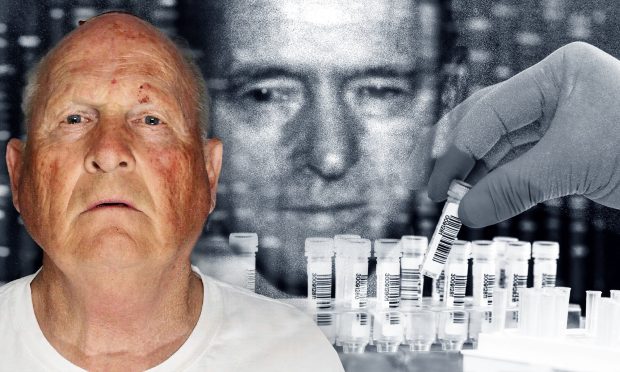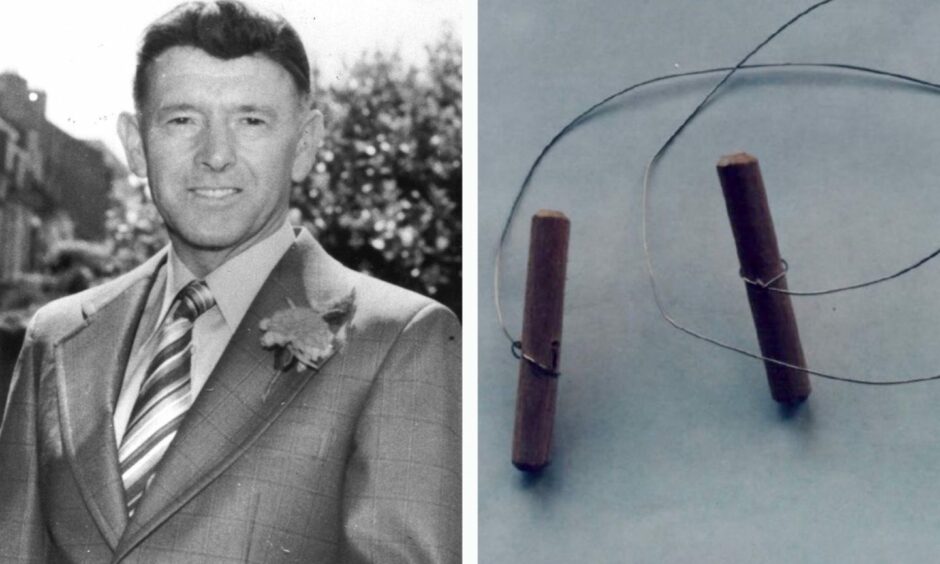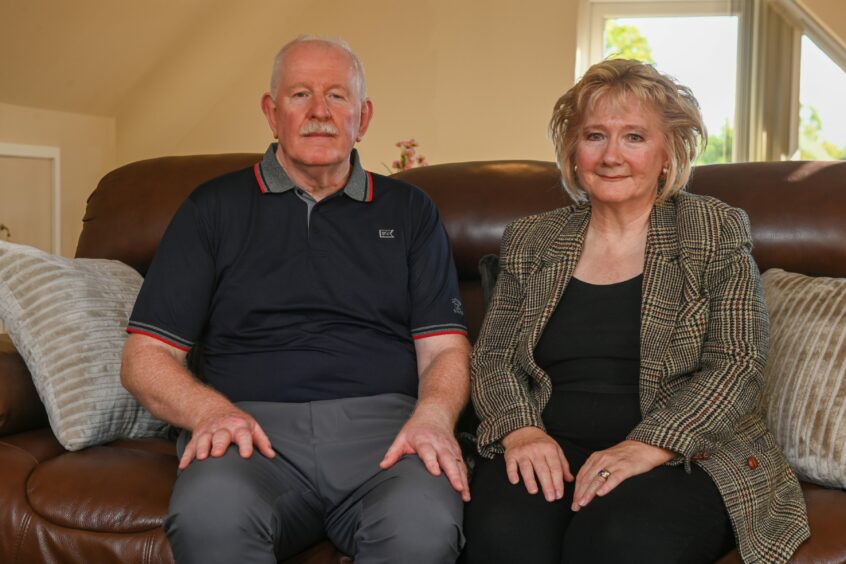Detectives investigating the murder of Aberdeen taxi driver George Murdoch could adopt the same tactics that helped to lock up an infamous American serial killer who evaded capture for more than 40 years.
Joseph DeAngelo, who was a former police officer, murdered at least 13 people and raped at least 50 women in California during the 1970s and 80s before his arrest in April 2018.
Investigators finally hunted down the so-called Golden State Killer after matching his DNA left at a crime scenes with a relative’s genetic profile found on a family history website.
Now, the same process of what’s known as genetic genealogy – combining DNA analysis with family trees – could unmask the mystery man who garrotted George with a cheese wire in 1983.
Today, on the 40th anniversary of his brutal death, detectives revealed they have a DNA profile of the unknown passenger who brutally attacked the cabbie on Pitfodels Station Road, Cults.
The man leading the hunt for his killer said the pioneering way in which the Golden State Killer was apprehended was one avenue he is keen to explore.
DeAngelo was in his 70s when he was finally identified as being the serial killer who terrorised California for two decades.
The FBI used genetic information that members of the public uploaded on family tree websites to cross-check it with DNA they had lifted from crime scenes.
That identified a distant relative of the killer and, by using traditional genealogy methods, investigators were able to search through the family tree and pinpoint DeAngelo as being the man responsible.
“We don’t have access to genealogy databases by private companies,” Detective Inspector James Callander said, adding: “That’s something that we would need to look into and will be considered”.
The Senior Investigating Officer has urged “any son or daughter” with “suspicions that their father may have been responsible for George’s murder” to contact Police Scotland.
A swab of their mouth for a sample of their DNA would either eliminate their relative or incriminate him as the evil perpetrator who’s evaded justice since September 29 1983.
Anyone who helps to successfully identify the wanted criminal could claim a huge cash reward of £50,000.
The killer’s DNA profile has been described by DI Callander as “the most significant thing in this case for the whole period it’s been investigated”.
He praised the scientists whose forensic reviews of existing evidence, which started in the early 2000s, led to the major breakthrough towards the end of 2018.
Comparative searches of DNA databases that Police Scotland has had access to, including ones in Australia and Canada, have not returned any matches to people already known to law enforcement.
However, the Major Investigation Team has been able to use the DNA profile to eliminate “the vast majority” of people from a pool of more than 50 persons of interest.
“There are still some who are under a wee bit of scrutiny from a forensic science perspective but it’s very minimal,” Detective Inspector James Callander confirmed.
He added: “We don’t have the ability to do genealogy stuff. It’s been used in the United States previously but it’s never been used in the UK, as far as I’m aware.
“There’d be legal frameworks in place and I would really need to get Crown Counsel advice on that, but it’s certainly something that we would look at.”
‘Familial testing is hugely labour intensive’
Police are not able to use the Cheese Wire Killer’s DNA profile to automatically identify whether any of his relatives, who would have a similar profile, are on databases.
“It only automatically checks full profile against full profile,” the Det Insp explained.
“There is familial testing that can be done and that is something that we will be looking at but that is hugely labour intensive.
“It would need to be a physical check. It brings up a lot of individuals that we would then have to look at separately.
“That is something that is getting looked at and in time, should we get nothing from this appeal and other things that we’re looking at, that is something that will get looked at to progress as well.
“I’m pretty sure we will do it if we can, but I do know that it’s not a quick process. You’re talking a couple of years to get through the process – it’s not easy.”
George Murdoch was ‘a gentle, likeable and kind-hearted man’
George’s relatives, who knew him by the name of “Dod”, have never given up hope of one day helping police to secure justice for the “gentle, likeable and kind-hearted man”.
He was left dying in a pool of blood on the pavement outside his sky-blue Ford Cortina after being robbed of his wallet and his taxi’s takings, which amounted to anywhere between £21 and £35.
Dod’s 66-year-old nephew Alex McKay and his wife Robina, 67, have worked closely with detectives over the years and supported various police appeals for new witnesses to come forward.
Mr McKay told The P&J: “I used to think that they were shielding the killer through misplaced loyalty and love.
“I’ve since changed my mind. I think maybe this person has psychopathic tendencies, so, they’re more likely to be shielding them because they’re petrified of what that person might do to them or maybe to their children.”
But Robina pleaded with the public to do whatever they could to give the couple closure.
“I do sincerely believe that now we may be a lot nearer to giving away that £50,000 reward for information that would close this case,” she said.
Read more about the unsolved cheese wire murder of Aberdeen taxi driver George Murdoch
Anyone who has not come forward previously who believes they can assist the investigation should telephone 101 or e-mail: SCDHOLMESAberdeen@scotland.police.uk or private message the George Murdoch Murder Facebook page. For all the latest court cases in Aberdeen as well as crime and breaking incidents, join our Facebook group.



